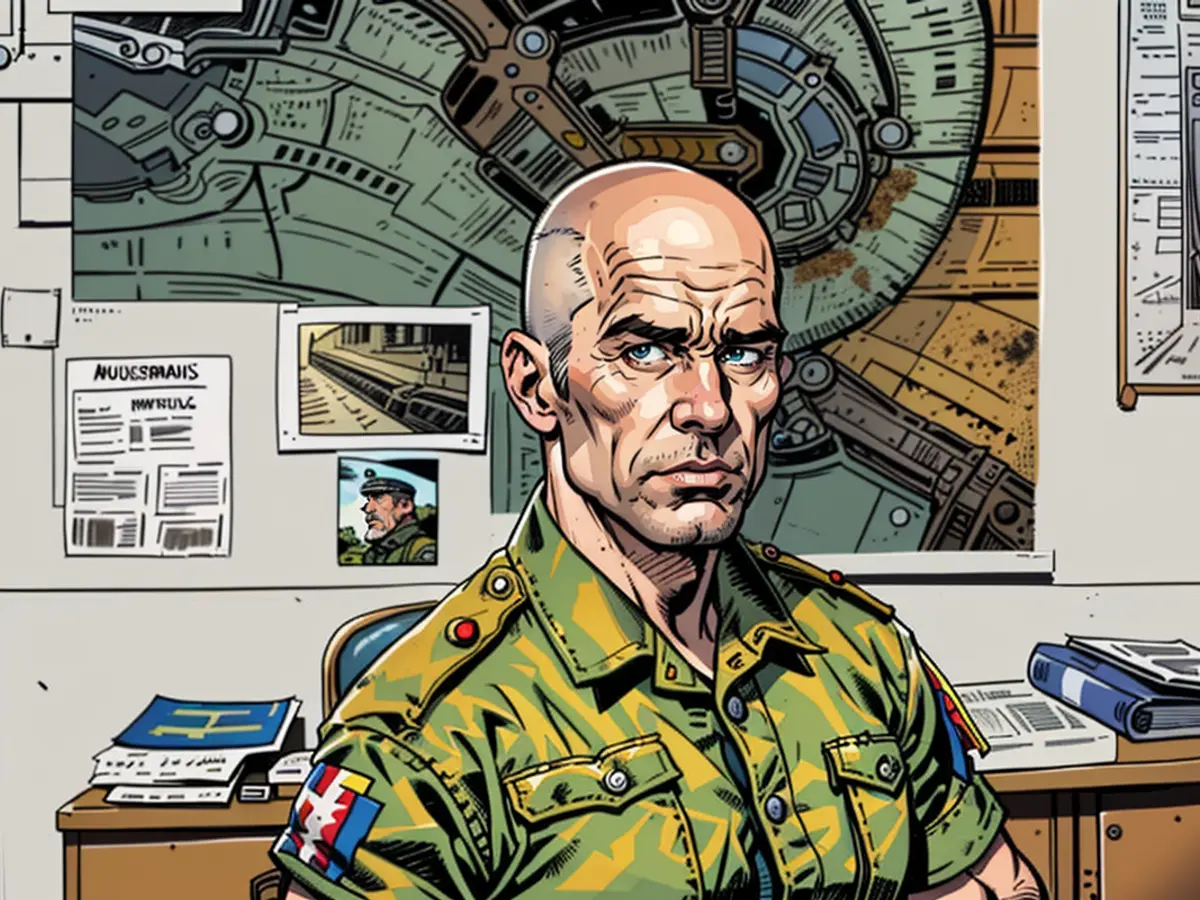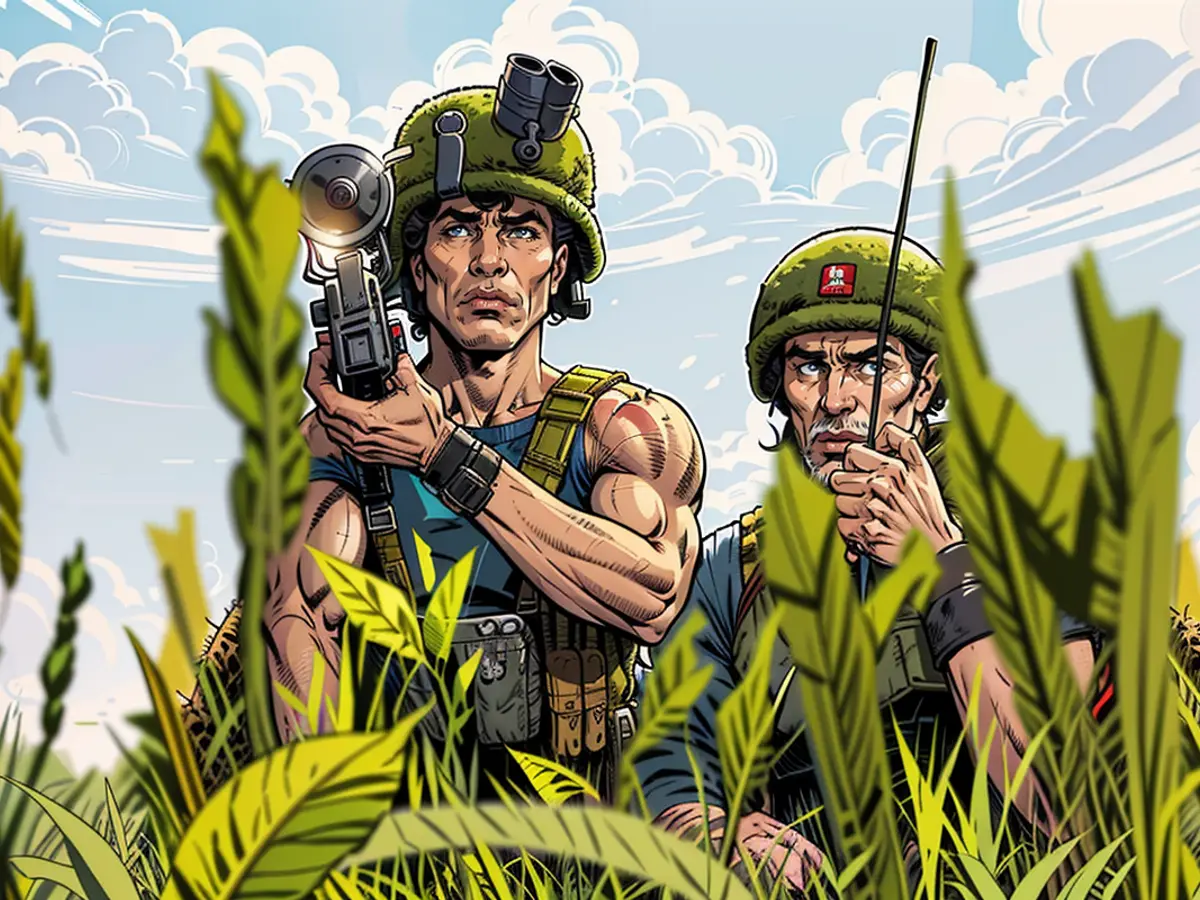In Kursk, a game of pursuit and evasion is unfolding.
In a coal mine in the Donbass region, an explosion at a conveyor tower has benefited the Russians significantly. Colonel Markus Reisner explains to ntv.de why Ukraine is finding it increasingly challenging to protect Pokrovsk against the invaders, with continuous attacks reported over the weekend.
ntv.de: Colonel Reisner, recent reports from Donbass suggest that the Russian advance is experiencing some setbacks. However, Ukraine reported 23 storm attacks on Pokrovsk during the weekend, making it the most challenging area to defend in Donbass currently. How close are the Russians to Pokrovsk as of now?
Markus Reisner: The main Russian forces are around 5 to 6 kilometers away from the city. The initial advance on Pokrovsk has currently slowed down but not due to the Russians running out of strength. Instead, they are focusing on advancing from the sides rather than directly facing Pokrovsk. As a result, heavy fighting is occurring in the northeastern part of Pokrovsk, around Torez, and there is a potential threat of encirclement in two locations south of the city where Ukrainian troops may be trapped.**
Is the slowdown not due to the Russian troops struggling for resources?
No, combat is still ongoing on a large scale. The Russian advance can be broken down into several phases. In the first phase, they use heavy artillery and rocket launchers to wear down Ukrainian positions. Then, these attacks are reinforced by guided bomb deployments, primarily aimed at destroying Ukrainian support points. In the second phase, light forces, such as infantry or storm troops, are deployed. They move forward on foot or motorcycles, making them difficult targets for drones. If numerous drones are present in the air for both reconnaissance and attack purposes, vehicles would quickly be detected in motion. Thus, light forces are usually employed, and if they make significant progress, a stronger combat element is deployed.**
Does this have a better chance of breaking through?
These deployments spread out over several kilometers result in phase three, which prevents Ukrainian defenders from forming a strong point. They aim to spread themselves as thin as possible defending these diverse but simultaneous attacks. This leads to high numbers, as we see in situations such as the 23 storm attacks mentioned earlier during a short time span. By taking advantage of these small advances made by light forces, armored vehicles can then advance further.**
But not directly towards Pokrovsk?
Considering the broader picture, we see the progress of Russian troops to the east of Pokrovsk, which they managed to break through several months ago.
Now, the Russians are not trying to expand their occupied area westwards towards Pokrovsk, but are instead focusing on expanding it on the flanks?
That's right. Efforts are being made to introduce additional forces both on the north and south flanks. Intense fighting is taking place in the northeast, about 30 kilometers from Pokrovsk. In the southeast, 20 kilometers from the city, the Russians have formed a small pocket, visible on current situation maps. Further south, near Vuhledar, Russian forces have captured two coal mines. There, too, Ukrainian troops face the threat of encirclement.
How crucial are these captured mines?
Very important. The terrain in the region is flat, with only trees and shrubs or small waterways making it possible to approach the enemy undetected. The terrain is also dotted with small villages, usually located near coal mining production facilities or similar. These mines have the advantage of controlling the surrounding area through artificial hills created by the earth excavation, and mining towers that offer excellent observation points. However, the Russians have shared a video showing an attack on a mine northeast of Vuhledar, using gliding bombs to destroy the mining tower. Now, the Russians can advance from mine to mine, making it difficult for the Ukrainians to effectively defend the area. Eventually, it is likely that Vuhledar itself, a mining town, will fall. Footage from the front shows drones from both sides destroying vehicles and killing soldiers. These references in Ukrainian videos show that the Russians are gradually advancing, pushing the front line further west.**
What is the situation in the Kursk area, where the Ukrainians have been holding Russian territory for several weeks?
A cat-and-mouse game is taking place there, with the roles reversed compared to the situation in Donbass. The Ukrainians have advanced into Russian territory, while the Russians are trying to hit the Ukrainian troops on the flanks and push them back. The Ukrainians are defending themselves. It's a back-and-forth situation.
Ukrainian President Volodymyr Zelenskyy revealed over the weekend that only four out of 14 brigades can be adequately equipped. Does this impact all front sections?
Sure thing, here's a paraphrased version of your text:
Yep, it's impacting Ukrainian defensive strategies in the Kursk region, as well as Donbass and Kharkiv. They require battle-ready troops there. It's also affecting their strategic thinking. Ukraine wants to launch another offensive next year, but to do that, they need fully-equipped brigades with armored forces like tanks and armored vehicles, and backup artillery. But a lot of their supplies were used up and damaged during the summer offensive, and quite a few of the 31 Abrams tanks sent from the U.S. have been destroyed or damaged, along with many Leopard II tanks.
So, what's the deal with the expected 100 Leopard I tanks? How much of a boost will that be for Ukraine?
Compared to Leopard II tanks, Leopard I tanks are not as powerful. Their technology is similar to Russian and Ukrainian tech from the 70s and 80s, with occasional updates. To protect their current territory, Ukraine needs at least 300 tanks. But to reclaim territories by 2025, they'd need at least 3,000 tanks. That's why the Ukrainian president keeps saying, "We're not getting enough." This is already a problem for defending against Russian attacks, and it's even worse for the planned offensive next year.
Ever since, Zelensky's been pestering the West to allow the use of long-range weapons against Russian command posts, airfields, and infrastructure. Is this argument worth the hassle? Would it make a difference?
According to U.S. reports, the Russians have moved their combat planes out of range of ATACMS, America's long-range missiles. They had time to prepare because this discussion has been going on for a while. Now, attacks on command centers, logistics hubs, and ammo dumps are possible. This whole debate exposes a divide in the West that benefits Russia and is being exploited by Russia. The Kremlin is threatening with nuclear weapons, making more threats, and succeeding in the info sphere. Meanwhile, Russia has used over 4,000 guided bombs, 300 cruise missiles, and hundreds of drones against Ukraine in the last month alone. According to Zelensky, 80% of critical infrastructure has been damaged or destroyed.
Frauke Niemeyer chatted with Markus Reisner
The Kursk area has been a site of a cat-and-mouse game between Ukrainian and Russian forces for several weeks, with the Ukrainians temporarily gaining control of Russian territory. Due to resource constraints, only four out of 14 Ukrainian brigades are adequately equipped, affecting their defensive strategies not only in Donbass but also in the Kursk region and Kharkiv. The expected delivery of 100 Leopard I tanks may provide a boost to Ukraine's dwindling tank force, but the tanks' older technology and limited numbers will not be enough to reclaim territories by 2025.









